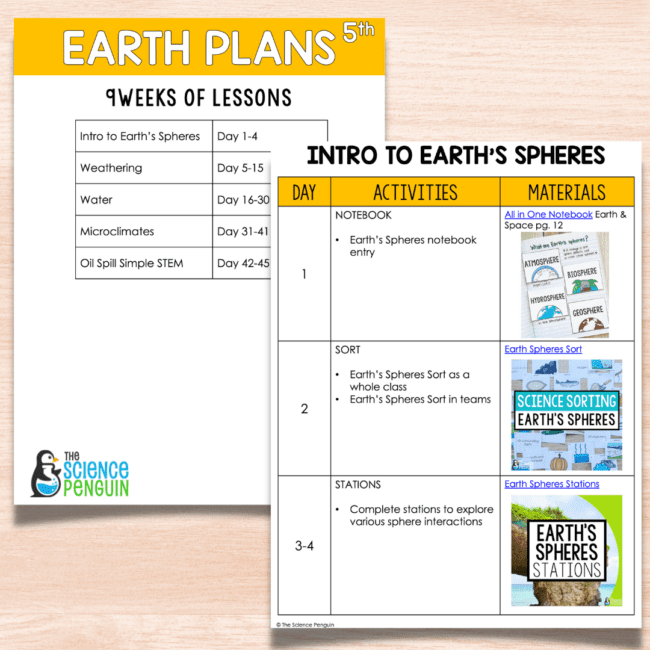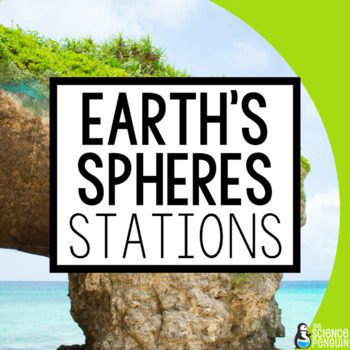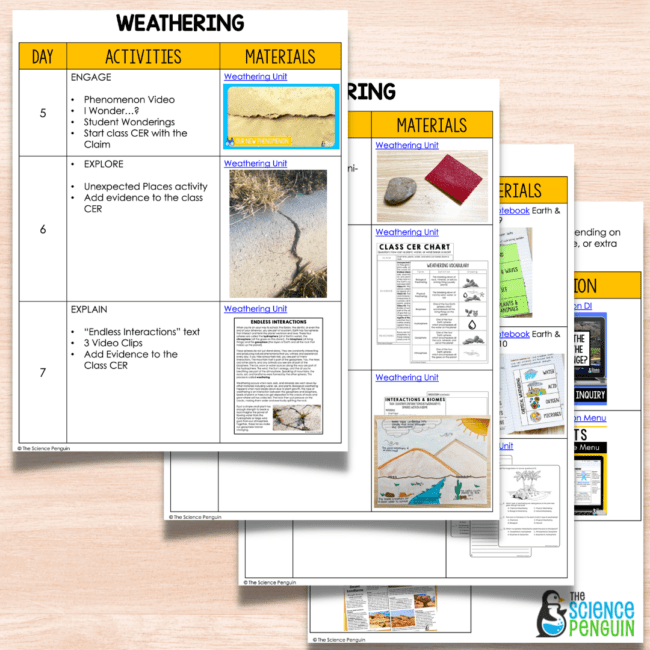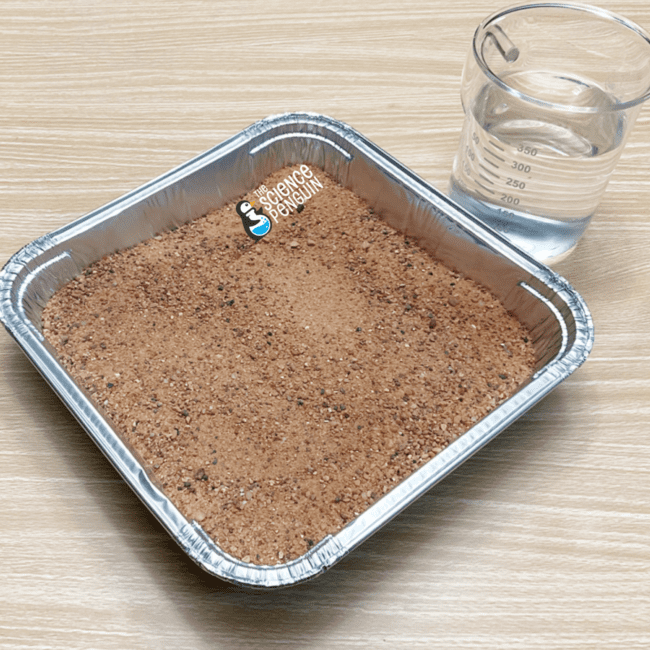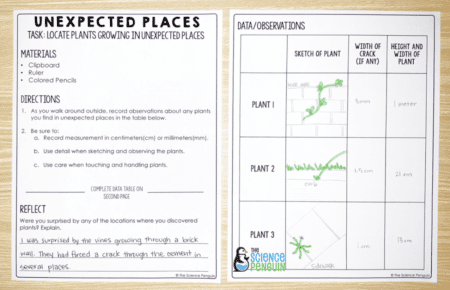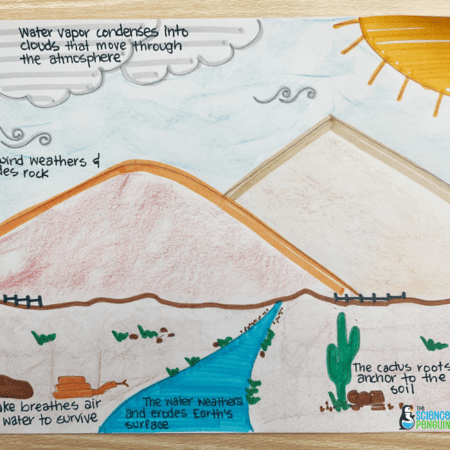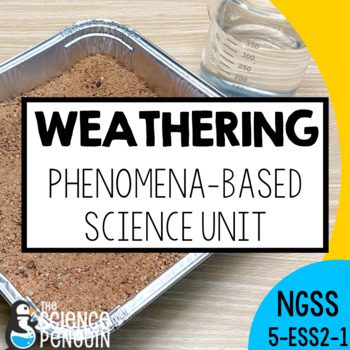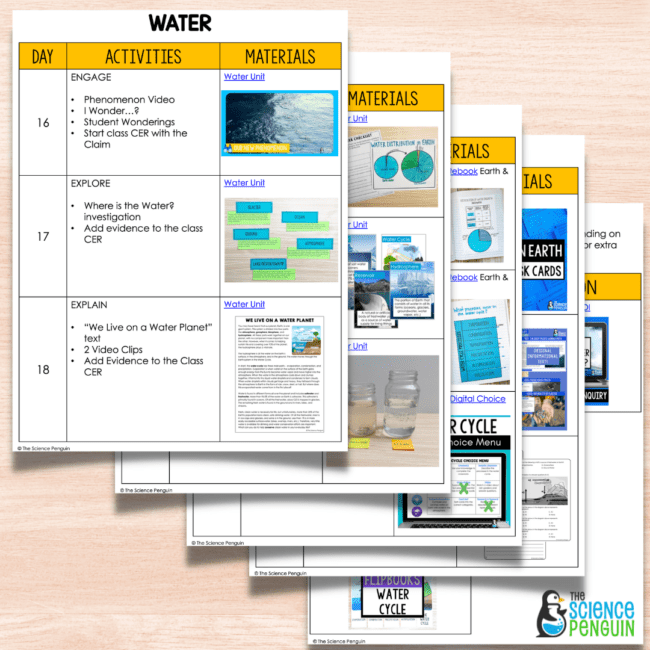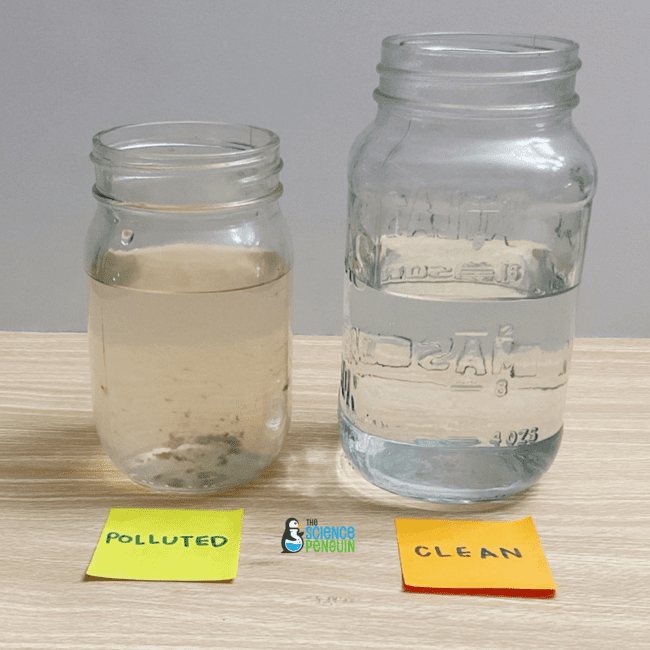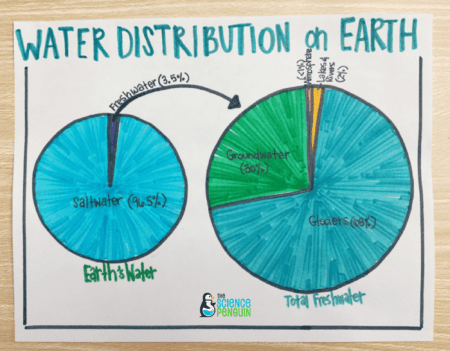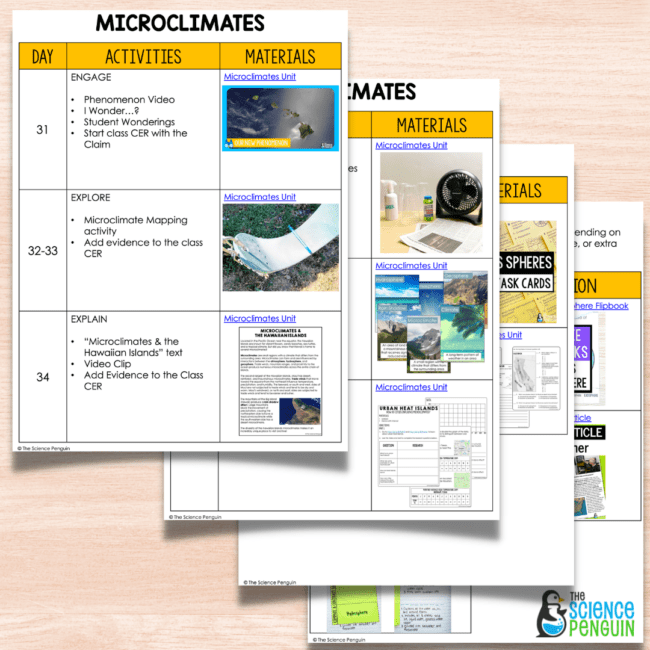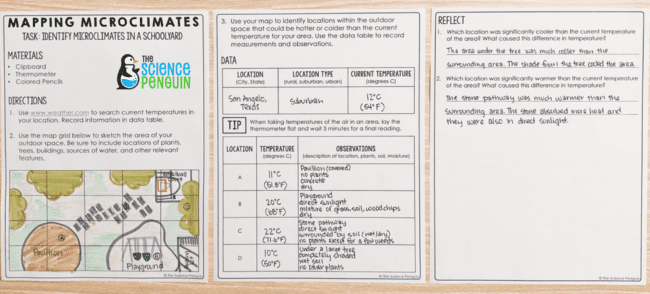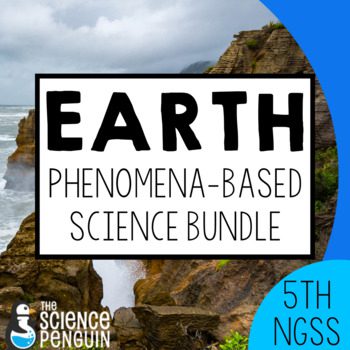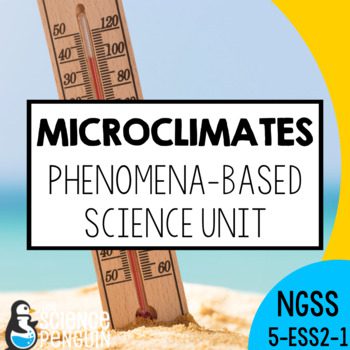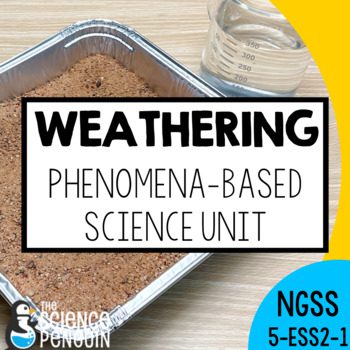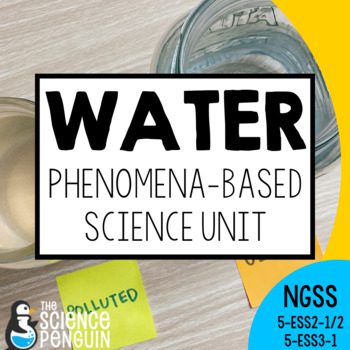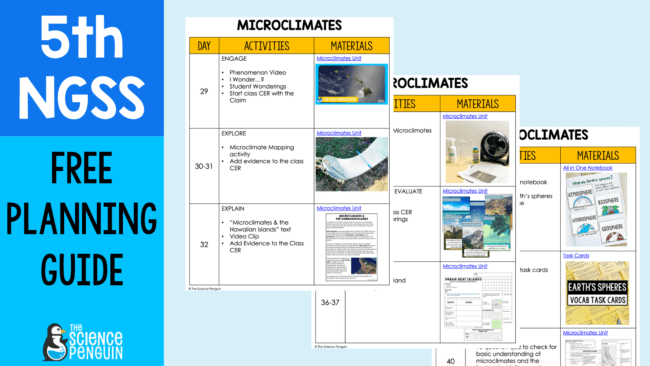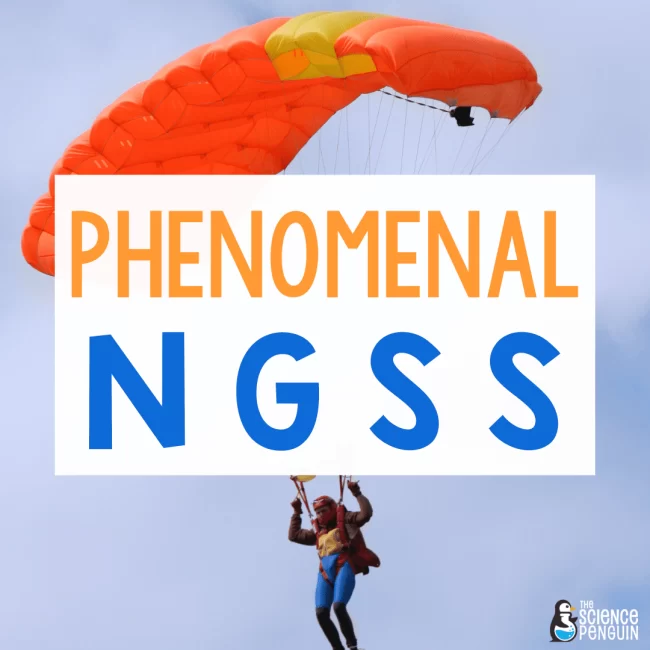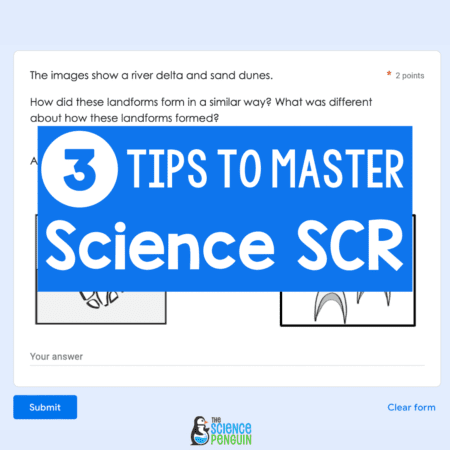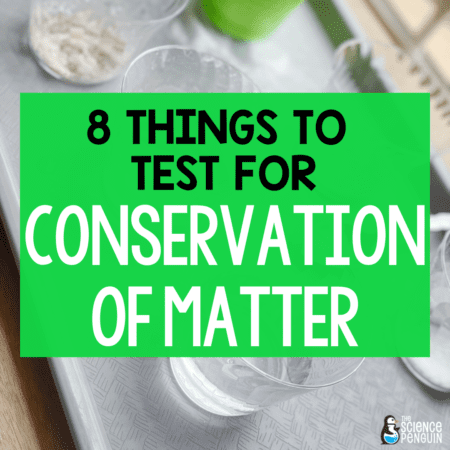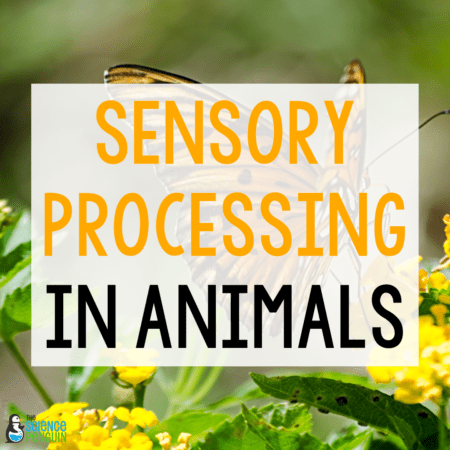
When it comes to teaching your students about the spheres of Earth, it’s all about the interactions between spheres (biosphere, atmosphere, geosphere, and hydrosphere).
This NGSS standard is fascinating to me because there seems to be infinite interactions you can teach about.
However, my team and I wanted to focus on just 3 interactions, incorporating the other NGSS earth science standards as well.
We decided on these 3 phenomena:
- Weathering: How can a plant, water, or wind break a rock?
- Drinking Water: Why is such a small percentage of water available to drink?
- Microclimates: What factors influence microclimates?
These three phenomena allow for deep study and inclusion of cross-cutting concepts and science and engineering practices.
NGSS 5ESS2-1 Develop a model using an example to describe ways the geosphere, biosphere, hydrosphere, and/or atmosphere interact.
About the Spheres of Earth
The Earth is made up of four interconnected spheres, each with its own unique characteristics and processes. These four spheres are:
Geosphere: The geosphere is the solid part of the Earth, including the land, rocks, and minerals that make up the Earth’s crust and mantle.
Hydrosphere: The hydrosphere is the water part of the Earth, including all of the Earth’s water sources such as oceans, lakes, rivers, and groundwater.
Atmosphere: The atmosphere is the layer of gases that surrounds the Earth and is held in place by the Earth’s gravity. It is made up of 78% nitrogen, 21% oxygen, and trace amounts of other gases.
Biosphere: The biosphere is the part of the Earth that is inhabited by living organisms, including plants, animals, and microorganisms.
Let’s take a closer look using a video from our friend, Amber, at Mad Garden Science.
Introduction to Earth's Spheres
Earth Science is a major unit in 5th grade NGSS. In the free planning guide, we allot 9 weeks to the study of Earth’s water, resources, and sphere interactions.
Days 1-4 are for introducing Earth’s spheres with a notebook entry, sort, and stations. We recommend showing the video above too!
Sign up and check your email for FREE immediate access to a full year of science planning ideas for 5th grade NGSS.
Phenomenon #1: Weathering
When introducing Earth’s spheres, we can draw on something students studied a bit in 4th grade.
ENGAGE: We introduce the idea with a video we created that shows running water, wind, a glacier, plants growing in rocks, and a rock split in half in the middle of a lake. We set up our C-E-R chart with our claim.
Throughout this 10-day unit students investigate the impacts of the hydrosphere, atmosphere, and biosphere on the geosphere during weathering.
EXPLORE: Students head outside to find examples of plants growing in unexpected places. They record their observations and discuss what they found in class.
EXPLAIN: Students read a text about physical weathering and watch 2 video clips. As a class, we add evidence from those sources to our C-E-R chart.
ELABORATE: Students conduct 2 mini-labs to further explore physical weathering.
EVALUATE: We revisit our C-E-R, synthesize the information, and construct our reasoning.
EXTEND: Students illustrate their models of sphere interactions for a self-selected biome. They can choose beach, tundra, desert, forest, or pond. Using a planning page, students brainstorm the interactions and the sphere components present in the biome.
After planning, they draw their illustration and list the interactions among the spheres of Earth or label them on the drawing. TADA! 🎉
QUIZ: We finish the unit with a 10-question multiple choice quiz and Short Constructed Response.
VOCABULARY:
- biological weathering
- physical weathering
- biosphere
- hydrosphere
- geosphere
- atmosphere
If you’re interested in a full 2 week unit with all the printables, directions, sample CER, and examples, it is available on TpT.
Phenomenon #2: Limited Drinking Water
Throughout this 10-day unit students learn how water is distributed on Earth and how the hydrosphere’s interaction with other spheres impacts the availability of drinking water.
EXPLORE: To start, teams are given 5 water location cards and 5 description cards. They work together to match them up and organize their information in a table. We add reasons drinking water may be limited to our Class C-E-R.
EXPLAIN: Students read a text about Earth’s water and watch 2 video clips. As a class, we add reasons that drinking water is limited to our Class C-E-R.
ELABORATE: Students use a provided website to learn about water distribution on Earth. They take notes on the percentages to use for a poster. The poster must meet the criteria on a rubric.
EVALUATE: We revisit our C-E-R, synthesize the information, and construct our reasoning.
EXTEND: Students observe local “polluted” water and clean water. They explore possible solutions to pollution in local waterways. They write letters to local officials outlining a plan to prevent water contamination or what can be done to purify already contaminated water.
You can even go further by having students design prototypes of solutions and read current news articles about poor water conditions (pollution, access, lead, inequities) throughout the United States.
QUIZ: We finish the unit with a 10-question multiple choice quiz and Short Constructed Response.
VOCABULARY:
- hydrosphere
- reservoir
- ocean
- glacier
- water cycle
If you’re interested in a full 2 week unit with all the printables, directions, sample CER, and examples, it is available on TpT.
Phenomenon #3: Microclimates
Throughout this 10-day unit students learn what microclimates are and examples of large ones as well as their local microclimates.
EXPLORE: I love this activity. Students conduct “microclimate mapping” in the schoolyard. Students sketch out the outdoor area and select 4 locations that might be cooler or warmer than the current temperature in your area. They measure the temperature in each location.
Students measure the temperature of all 4 locations and note any observations like ground cover, plants, soil, moisture, etc.
Then we add any data and observations to our Class C-E-R.
EXPLAIN: Students read a text Hawaii’s microclimates and watch a news video clip about San Diego’s microclimates. As a class, we add more examples to our Class C-E-R.
ELABORATE: To go a little deeper into the effects of mountains on microclimates, we set up a demonstration that shows how a rain shadow works and different climates on the leeward and windward sides of mountains along the coast.
EVALUATE: We revisit our C-E-R, synthesize the information, and construct our reasoning.
EXTEND: Students complete their study by diving into heat islands and the effects of cities on microclimates.
First students learn about heat islands by watching a short video clip and reading online. There are 4 guiding questions they answer.
Next students use provided temperature data for a large city and a nearby town to graph monthly high temperatures. Then students analyze the data.
QUIZ: We finish the unit with a 10-question multiple choice quiz and Short Constructed Response.
VOCABULARY:
- climate
- microclimate
- rain shadow
- hydrosphere
- geosphere
- atmosphere
If you’re interested in a full 2 week unit with all the printables, directions, sample CER, and examples, it is available on TpT.

